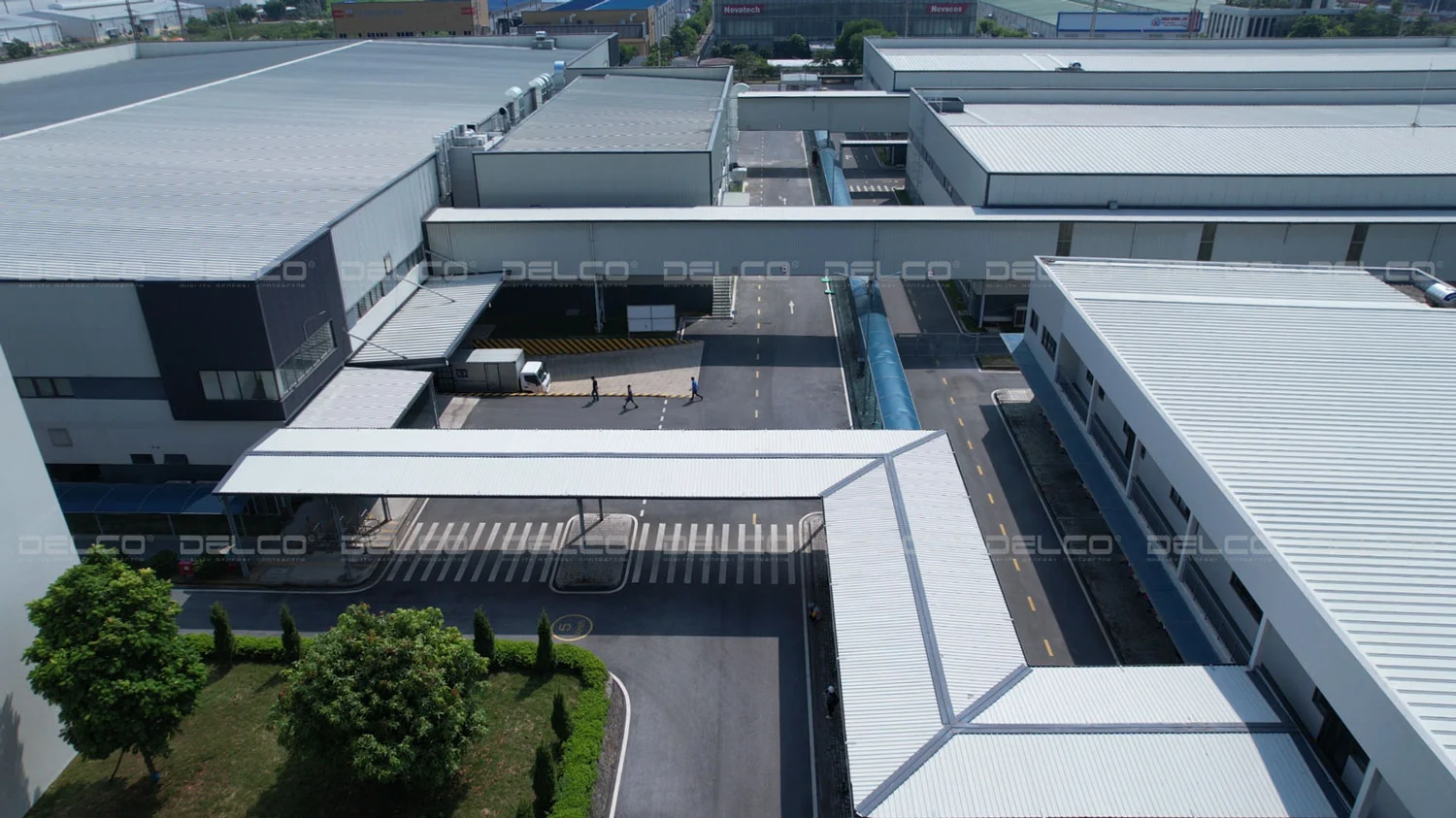Fire prevention measures recommended by the Fire Prevention and Fighting Police and the high-quality general contractor DELCO help businesses proactively prevent, fight against, and mitigate the damage caused by fires and explosions at production facilities.
Fire and Explosion Risks from factory operations
In 2023, there were 3,440 fire incidents in Vietnam. At the beginning of 2024, the number of fires showed a decreasing trend. However, fire incidents in factories and workshops causing significant damage to people and property still continue to occur. In March 2024, a fire broke out at a factory specializing in the production and assembly of electric and telecommunications cables in Dong Nai due to fire from a pile of trash and dry grass spreading into the factory, causing great property damage. In May 2024, a boiler with a capacity of 1000 kg/h exploded due to technical errors at a wood production company in Bac Giang killed 6 people.
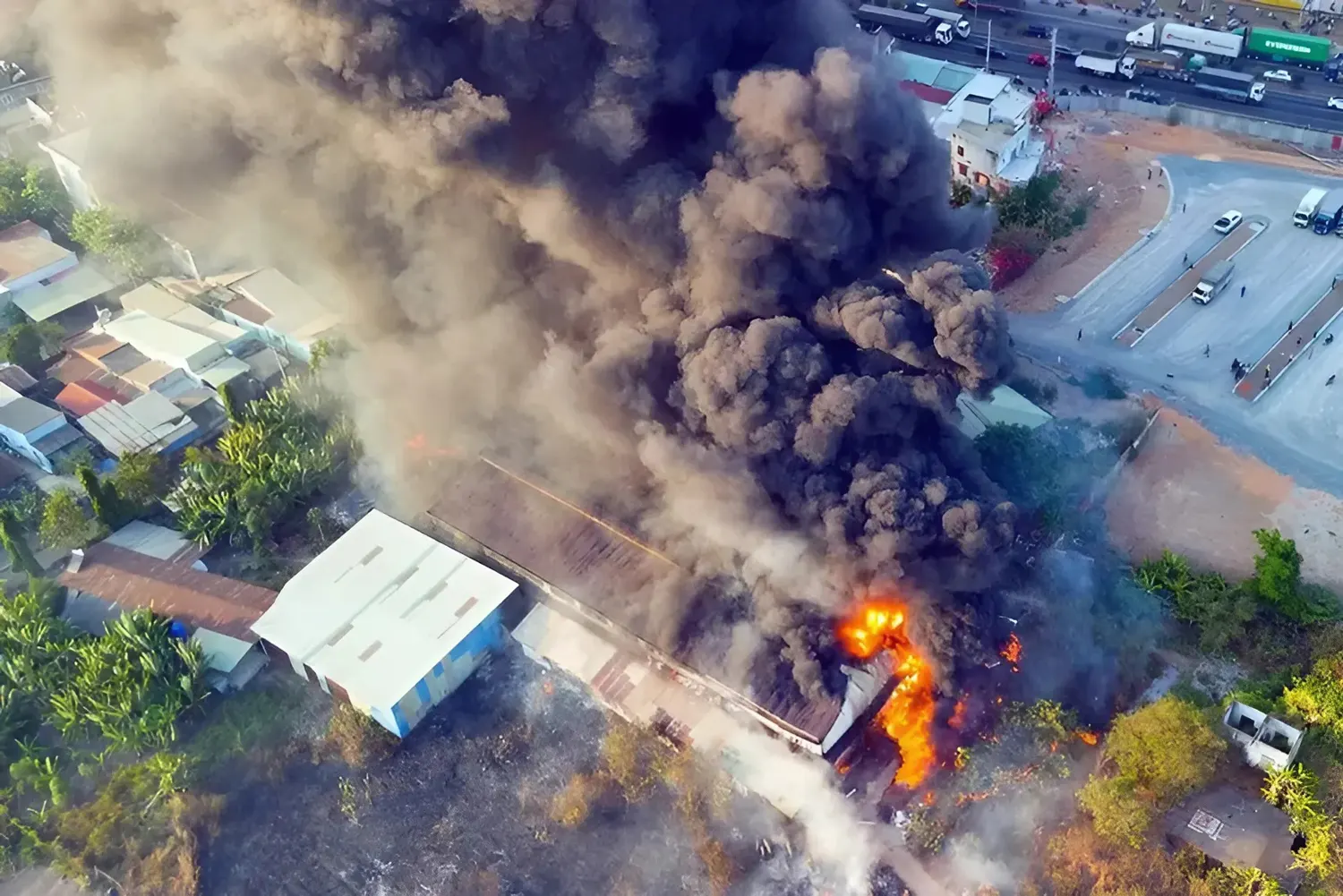
At workshop and factories, fires and explosions mainly occur due to the lack of safety during production operations:
- Combustible materials: Flammable materials such as gasoline, oil, gas, and easily ignitable materials like wood, paper, and plastic are not properly stored, collected, and handled, leading to fires and explosions.
- Electrical faults: Electrical overload, improper connections, and devices not meeting technical standards cause short circuits and fires.
- Violation of labor safety: Workers lack knowledge of fire prevention regulations in factories, are not equipped with protective gear, or neglect safety steps when handling flammable objects.
Seven fire and explosion prevention measures at factories as recommended by the Fire prevention and fighting police and Quality contractor DELCO
Strictly adhere to fire prevention and fighting regulations in factory design and construction
Investors need to fully comply with current fire prevention and fighting regulations, such as designing fire compartments, escape routes, using fire-resistant materials, and fire-resistant structures, etc., to effectively prevent the spread of fire and evacuate workers.
In addition, the fire alarm and fire-fighting systems must be fully equipped to operate promptly in the event of a fire incident. Investors need to comply with regulations on specialized fire extinguishing agents for each production area: the electrical room area must use the FM200 system, CO2, or nitrogen gas; the chemical area must use foam or powder, gas fire extinguishing systems, etc.
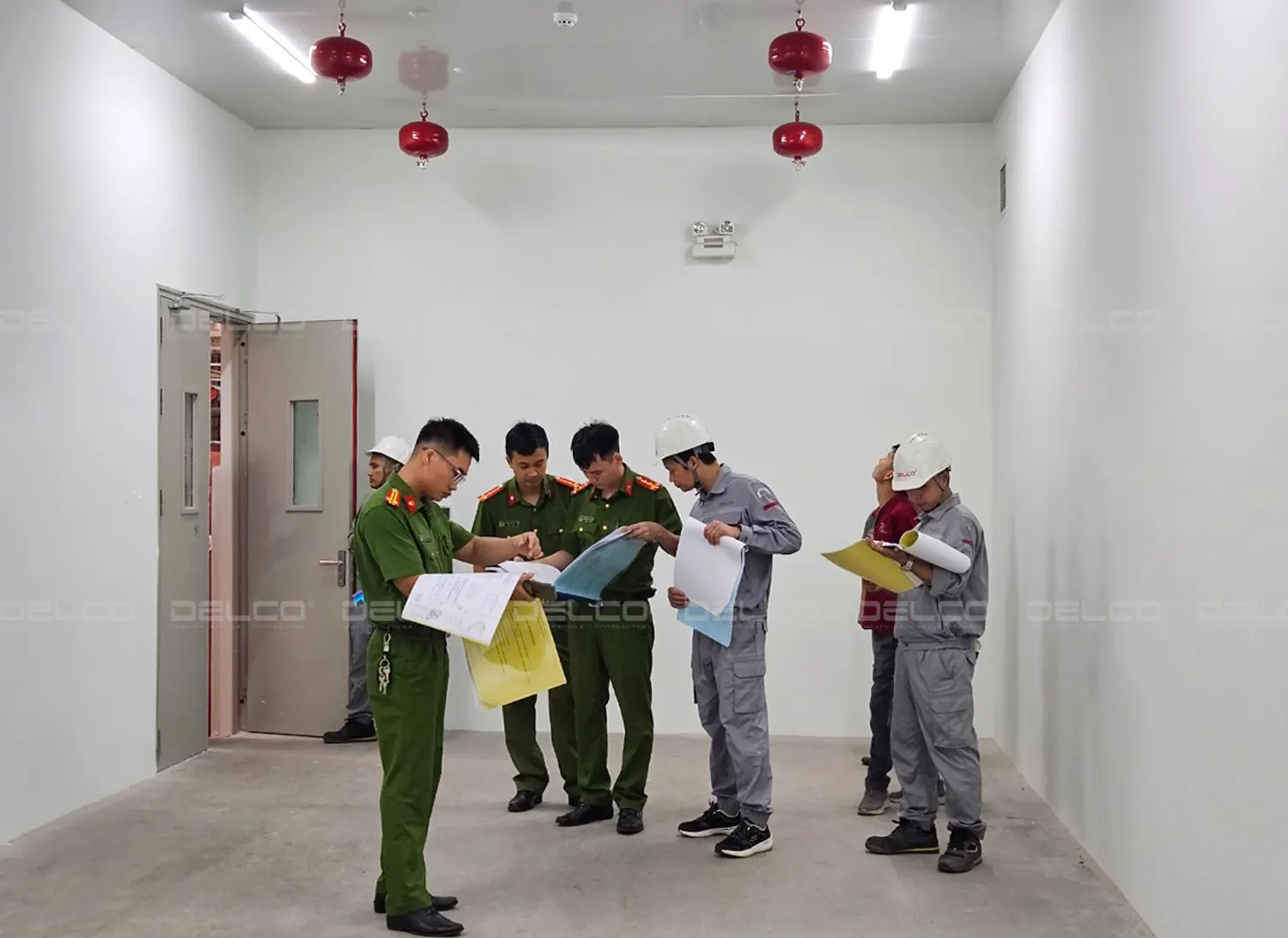
Appraisal of the fire prevention and fighting system at Dainese factory by DELCO as the MEP Design – Build contractor
Design a safe electrical system
The electrical system is the core of production operations; therefore, enterprises need to use the electrical system correctly, calculating sufficient capacity to meet the factory’s operational needs, preventing overloads and voltage drops. There have been incidents due to overloaded electrical systems and improper connections between new and old factory buildings, leading to short circuits and fires.
Furthermore, to ensure electrical safety, enterprises should avoid placing flammable materials near electrical sources, install automatic shut-off devices for the electrical system in factories/warehouses, and shut-off devices for high-power electrical equipment. Enterprises should arrange electrical cabinets in areas away from warehouses, ensure that cable trays are properly installed, cables in electrical cabinets are neatly organized, meeting aesthetic and safety requirements as well as facilitating easy periodic inspection and maintenance.

Electrical cabinet by contractor DELCO
See also: Consideration when designing and constructing factory’s MEP systems
Operate equipment safely and maintain regularly
Enterprises need to train and closely supervise workers to ensure they operate machinery correctly, safely, and comply with labor safety standards. Workers must turn off electrical equipment and production machinery when not in use. When performing tasks that generate electrical sparks, such as welding, they must wear protective gear and shields, keeping away from material storage areas and electrical sources.
Additionally, machinery that does not meet technical standards, has not been maintained over a long period, or operates under overload can generate heat or leak fuel, leading to fires or explosions. Therefore, enterprises need to inspect and maintain equipment regularly to timely detect potential risks and prolong the equipment’s lifespan. When conducting maintenance, enterprises must strictly adhere to labor safety regulations, lock circuit breakers, cut off power sources, and forbid unauthorized power restoration during maintenance and repairs. Maintenance areas must have signage, and maintenance personnel must be fully equipped with personal protective equipment and comply with technical procedures as regulated.
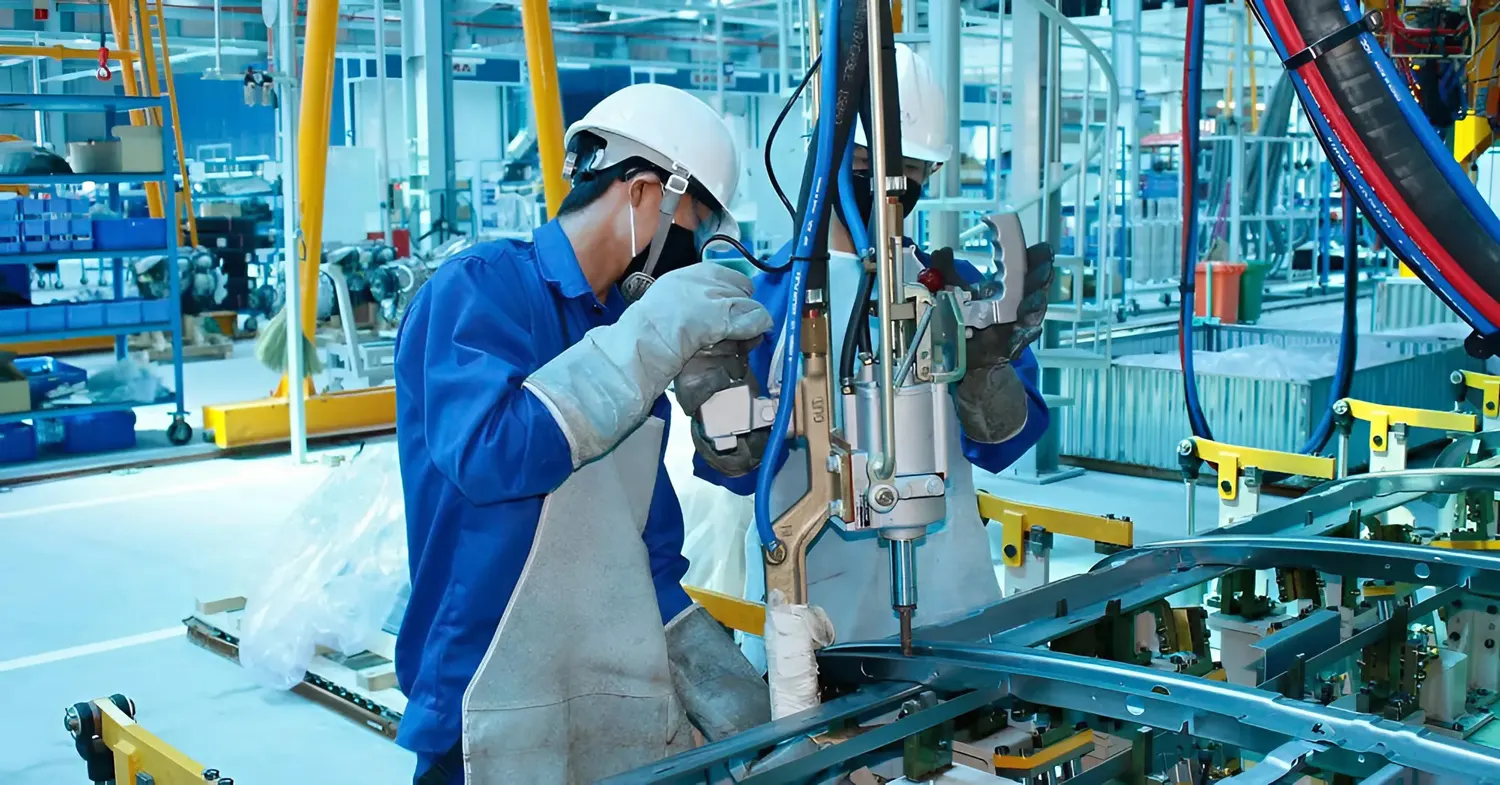
Regularly inspect fire prevention and fighting equipment
Enterprises need to coordinate with authorities to organize regular inspections and maintenance of fire prevention and fighting equipment to ensure the system’s readiness and usability. Fire alarm and firefighting equipment must be inspected at least once a year, and comprehensive maintenant at least every two years. The inspection and maintenance of equipment must follow the manufacturer’s instructions and comply with TCVN 5738:2021 and TCVN 3890:2023 standards.
Properly Arrange and Store Goods
To prevent factory fires and explosions, the Fire Prevention and Fighting Police recommend that enterprises arrange goods and materials according to regulations, always ensuring emergency exits and firebreaks as required. Goods should be classified according to flammability and stored accordingly. Warehouses for flammable goods, materials, and solvents must be planned and equipped with fire prevention and fighting equipment according to QCVN 06:2022.
Additionally, enterprises need to regularly clean and organize factories; collect, recycle, or dispose of waste and production residues such as sawdust, scrap paper, and fabric scraps according to fire prevention and fighting regulations in order to prevent these materials from igniting and causing fires.

Handle combustible dust in specific factories
In specific factories such as wood processing, metal production, plastic manufacturing, and paper production, there is often a large amount of combustible dust like sawdust, plastic particles, and metal dust. These materials can easily ignite when exposed to high heat sources. Therefore, enterprises need to clean factories regularly, install ventilation systems, dust extraction systems at the source, and use standard dust separation equipment to reduce the concentration of combustible dust in factories.
Develop firefighting and rescue scenarios and conduct regular drills
Enterprises should regularly organize training sessions, develop firefighting and rescue scenarios, and conduct drills to raise workers’ awareness of fire and explosion risks, help them grasp basic fire prevention and fighting knowledge, use firefighting equipment proficiently, and understand firefighting and rescue procedures in emergencies.
Additionally, enterprises must strictly supervise workers to ensure compliance with workshop and factory fire prevention and fighting procedures, such as turning off power at the end of shifts and prohibiting the bringing of flammable substances or smoking in factories.
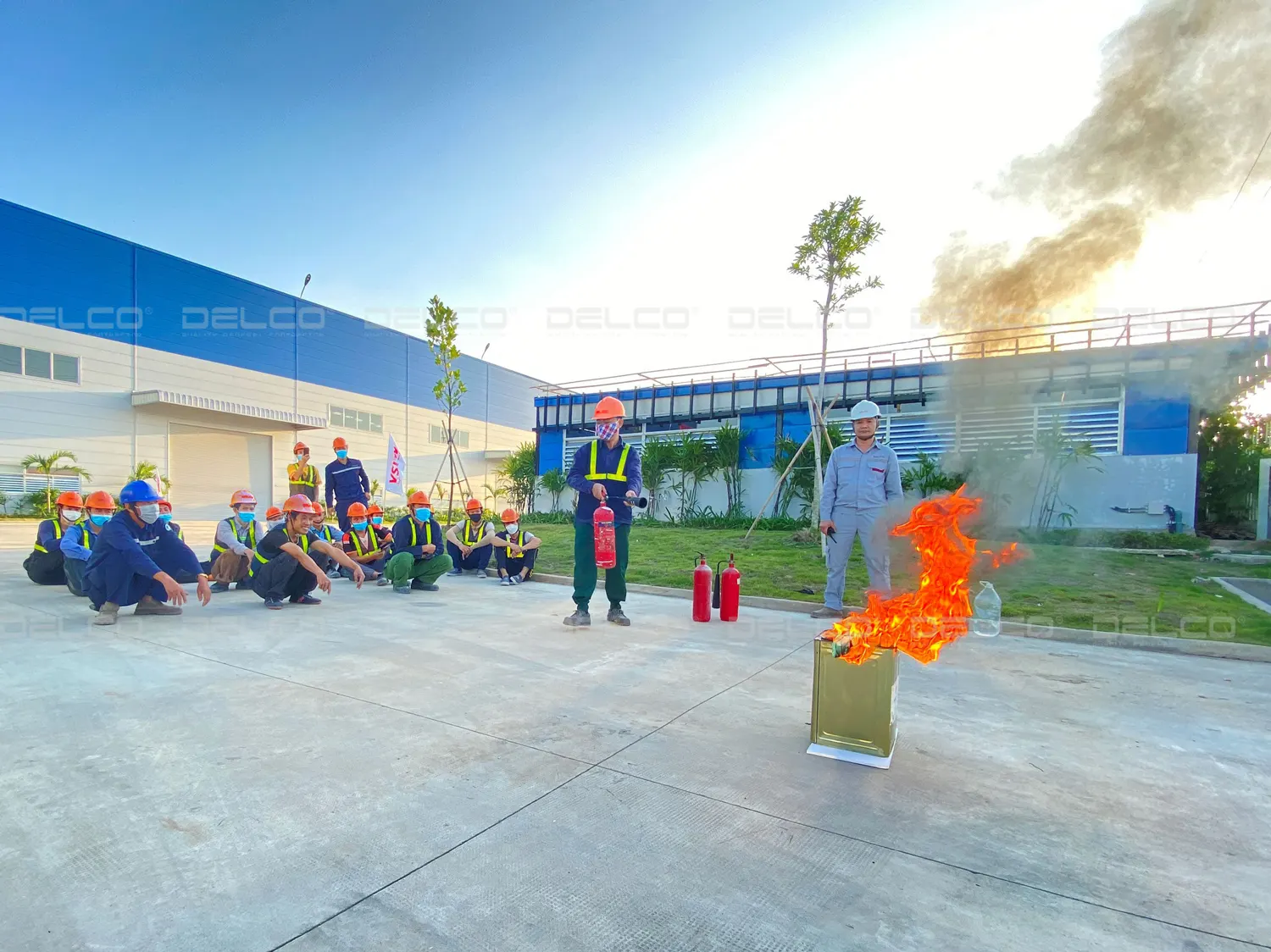
Fire Prevention and Fighting training at DELCO construction Site
See also: Important key points in fire safety regulations in factory construction – Updated 2024
See also: 5 construction industry trends for 2024


